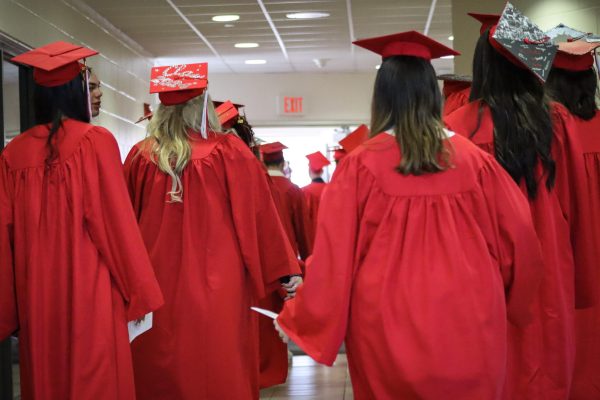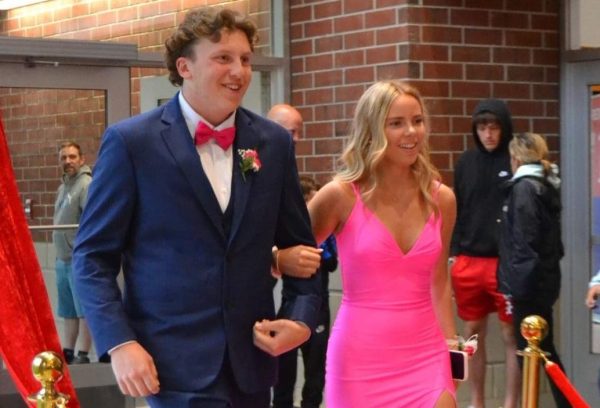The Education of Physical Education
May 17, 2019
All you have to do is try. That’s what they tell you at the beginning of every gym class. That’s what your family says when you complain. That’s what your guidance counselor says when arguing that gym’s an easy A. That’s what your friends say as they push their athletic bodies into sprints.
That’s what everyone says, resounding in your head as your heart beats a constantly increasing rhythm from where you stand beneath a looming basketball hoop. All you have to do is try. But, is it really as easy as it sounds?
I’ve always been sensitive about my athletic ability, and it’s terrifying to stand in front of my peers, all their eyes on me as I compete with someone to get a ball in a hoop that is five feet above my head. I’m positive that I can’t get it in, even if I really try.
But that fear and dislike I have for gym don’t mean that physical education is something that should be removed from Hudson High School. A gym teacher once said to me that all subjects are important, but hers is the most important because, without her, there is no math, there is no science, there is no English. Without your health, you have nothing.
The problem is: physical education is not reaching its mandate to stimulate the ‘physical well-being’ of students.
In an attempt to make PE more fun, it’s become a period where students have to play a variety of sports. And yes, some people love this. But others stare up at that hoop in the same state of stress I do or look at the rubber ‘kickball’ as it comes toward them just hoping that their depth perception has improved enough for them to actually hit it.
Yet, studies show that the kind of physical stimulation needed to keep up students health during health class is MVPA or moderate to vigorous physical activity which requires intense, relatively long, and frequent activity. And, if I’m being honest, I’m not so sure that the ten minutes I stand in line to kick a ball or shoot hoop counts.
However, increasing students’ physical stimulation will not solve the ‘dreading gym’ problem. It will probably only increase the number of students that do, and will likely only result in more sweaty armpits and tired expressions during the rest of the school day.
It’s hard to force physical activity because it’s no secret that people are more effective when doing something they’ve chosen to do. Students need to be given the chance to make that choice and to be comfortable in the class they make the choice in.
The solution is not the removal of physical education or the intensifying of it. Our school currently offers gym sectioned by grades, but perhaps, there’s a better way to do it.
While I might prefer to take a class centered around running and track, another student might prefer to take a mixed sports class or have a calming yoga period. By separating the gym classes based on activity, our school could make physical education a class that every student looks forward to instead of dreads.
The point is, the institution of physical education is not meeting its guidelines, so why are we so rigid about how this time is spent? As long as students are doing something active to break the sessile monotony of classes, who cares what they’re doing?
Some wellness teachers give students the option to walk the track instead of play or to play the game with just a little group of friends. And, frankly, that’s a perfect example of the way gym classes should be: separated based on interest and willingness to participate. No pressure from the eyes of other classmates, no requirement to play a sport that a student hates.
Physical activity is a choice as much as it is a necessity, and everybody needs to be comfortable in order to make that choice, whether the comfort comes from the audience they have or the activity they are doing.









